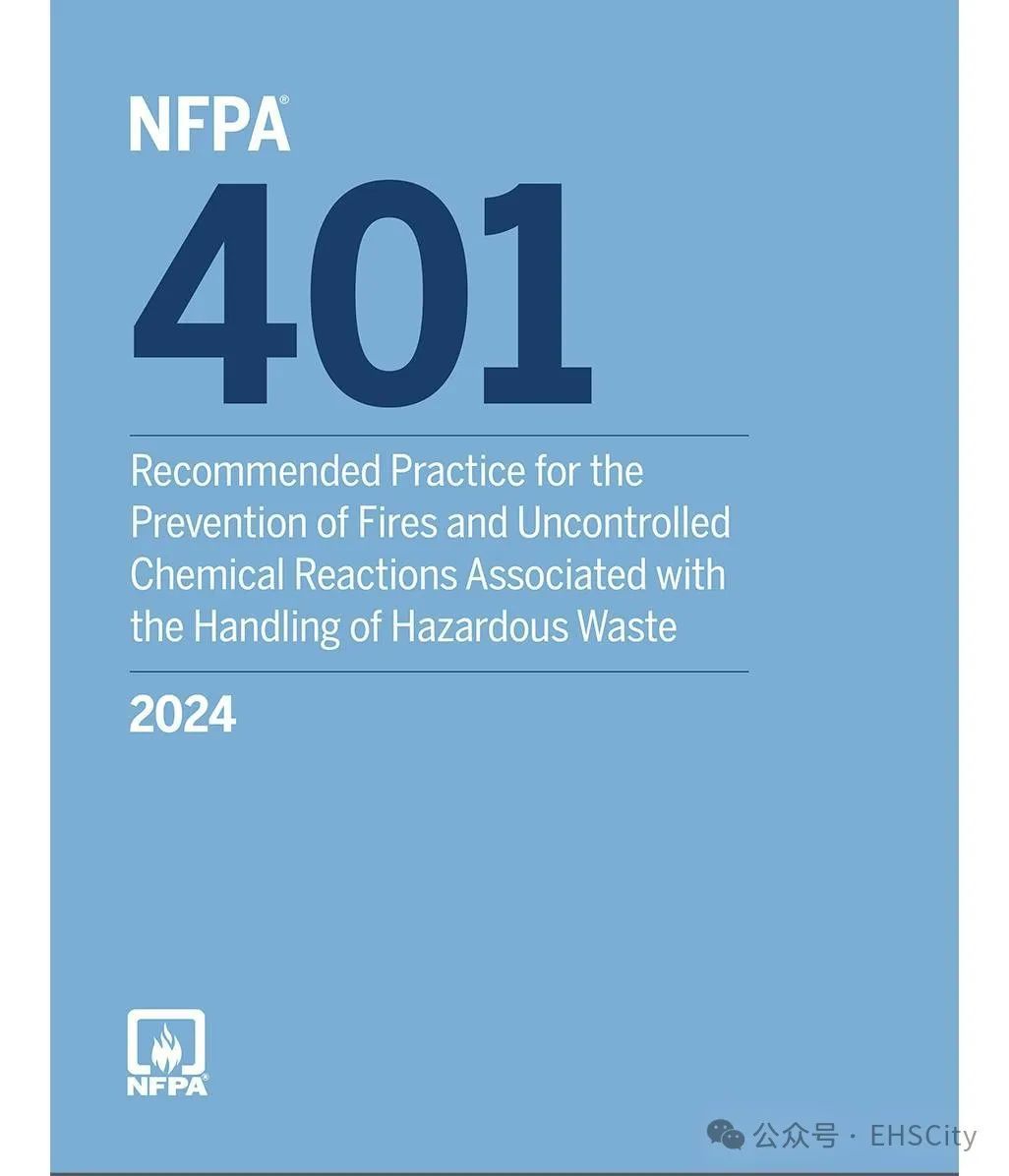 ntenteditable="false" style="box-sizing: border-box; vertical-align: middle; border-style: none; margin: 6px 0px !important; padding: 0px; cursor: pointer; max-width: 100%;" alt="" />
ntenteditable="false" style="box-sizing: border-box; vertical-align: middle; border-style: none; margin: 6px 0px !important; padding: 0px; cursor: pointer; max-width: 100%;" alt="" />
Origins
Committee Personnel
Chapter 1 — Administration
-
1.1 Scope.
-
1.2 Purpose.
-
1.3 Application.
-
1.4 Equivalency.
-
1.5 Units and Formulas.
Chapter 2 — Referenced Publications
-
2.1 General.
-
2.2 NFPA Publications.
-
2.3 Other Publications.
-
2.4 References for Extracts in Recommendations Sections.
Chapter 3 — Definitions
-
3.1 General.
-
3.2 NFPA Official Definitions.
-
3.3* General Definitions.
Chapter 4 — Goals, Objectives, and Assumptions
-
4.1 Administration.
-
4.2 Safety Goals and Objectives.
-
4.3 Assumptions.
-
4.4 Provision in Excess of Recommended Practice.
Chapter 5 — Waste Characterization
-
5.1 Administration.
-
5.2 Waste Characterization.
-
5.3 Means for Characterization.
-
5.4 Hazardous Waste Codes.
-
5.5 Fire Prevention.
-
5.6 Other Hazard Prevention Measures.
Chapter 6 — Documentation
-
6.1* Administration.
-
6.2 Additional References.
-
6.3* Hazardous Waste Documentation.
-
6.4 Hazard Communication Documents — Waste Profile.
Chapter 7 — Marking, Labeling, and Placarding
-
7.1 Administration.
-
7.2 Additional Regulations.
-
7.3 Hazardous Waste Marking and Labeling.
-
7.4* Hazardous Waste Placarding.
-
7.5* United Nations’ Globally Harmonized System of Classification and Labeling of Chemicals (GHS).
Chapter 8 — Facility Design
-
8.1 Administration.
-
8.2 General Compliance.
-
8.3 Chemical Compatibility and Separation.
-
8.4 Bulk Solid Wastes.
-
8.5 Bulk Liquid Storage.
-
8.6* Portable Tanks.
-
8.7 Container Storage.
-
8.8 Best Practices.
Chapter 9 — Additional Management of Oxidizers
-
9.1 Administration.
-
9.2 Regulations.
-
9.3 Segregation of Oxidizers and Incompatibility.
Chapter 10 — Reactive Chemicals
-
10.1 Administration.
-
10.2* Reactive Chemicals.
-
10.3 Reactive Chemical Categories.
-
10.4* Managing Uncharacterized Waste.
Chapter 11 — Lab Packs
-
11.1 Administration.
-
11.2 Transport.
-
11.3 General Hazards.
-
11.4 Prudent Practices.
Chapter 12 — Batteries and Cell Waste
-
12.1 Administration.
-
12.2 Hazard Mitigation.
-
12.3* Lithium Batteries.
-
12.4 Identifying Different Types of Lithium Batteries.
-
12.5 Safe Packaging of Lithium Batteries for Transportation Between Facilities.
-
12.6 Transportation and Packaging of Lithium Batteries.
-
12.7 Damaged Batteries.
-
12.8 Other Battery Types.
-
12.9* Related Regulatory and Advisory Guidance for Batteries. (Reserved)
Chapter 13 — Training for Personnel Involved in Hazardous Waste Management
-
13.1* Administration.
-
13.2 Training Based on Generator Status.
-
13.3 Risk Assessment.
Chapter 14 — Emergency Planning
-
14.1 Administration.
-
14.2 Facilities That Manage Hazardous Waste.
-
14.3 Higher Risk Chemicals.
-
14.4 Facility Siting Planning and Prevention of Upset Conditions.
-
14.5 Process Review, Plan Preparation, and Approval.
-
14.6* Fire Risk Controls.
-
14.7 Operation and Maintenance Procedures.
-
14.8 Incident Investigation Plan.
-
14.9 Transportation/Transporters.
Annex A — Explanatory Material
-
Chapter 1
-
Chapter 3
-
Chapter 4
-
Chapter 5
-
Chapter 6
-
Chapter 7
-
Chapter 8
-
Chapter 9
-
Chapter 10
-
Chapter 12
-
Chapter 13
-
Chapter 14
Annex B — Hazardous Waste Manifests
Annex C — Hazard Communication Safety Data Sheets (SDSs)
Annex D — Pipeline and Hazardous Materials Safety Administration (PHMSA) Hazardous Materials Table
Annex E — Improper Packaging of Batteries for Shipment
Annex F — Peroxide Formers Classification
Annex G — Examples of Potentially Incompatible Waste
Annex H — Emergency Response Plan Check List
Annex I — Additional Terms
Annex J — Informational References
 ntenteditable="false" style="box-sizing: border-box; vertical-align: middle; border-style: none; margin: 6px 0px !important; padding: 0px; cursor: pointer; max-width: 100%;" alt="" />
ntenteditable="false" style="box-sizing: border-box; vertical-align: middle; border-style: none; margin: 6px 0px !important; padding: 0px; cursor: pointer; max-width: 100%;" alt="" />
